What Do Wrens Eat? How Do I Get Them to My Yard?
Last Updated on
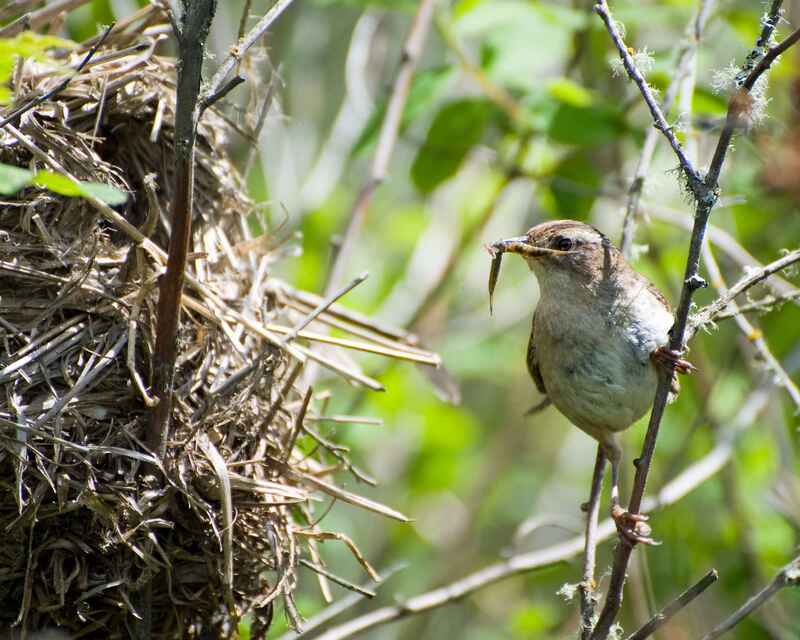
Whether you’re trying to attract wrens to your yard or just want to learn more about them, it all starts with knowing what they like to eat.
Wrens have a varied diet, though, and it can change from season to season. That’s why we wanted to highlight a few of their favorite treats for you here, as well as provide a few tips and tricks that you can use to help improve the chances of getting a few wrens in your yard.

What Do Wrens Eat?
Before you can attract a wren to your yard, you need to know what they eat. Be aware that their diet does change with the weather.
During the warm summer months, they rarely visit bird feeders, preferring instead to catch bugs and insects. It’s during the winter months that you can attract them to feeders with their favorite treats.
1. Mealworms

| Time of year | Summer |
| Cost | High |
Bluebirds are notorious for eating mealworms from feeders, but occasionally, you can catch a wren taking a few too. Wrens prefer to find their own insects during the summer months, so this is about the only food option that you’ll see them chowing down on in a feeder while the weather is hot.
You’re not guaranteed to attract one, but if you’re looking to do it from a feeder during the summer months, this is your best bet.
2. Flying Insects

| Time of year | Summer |
| Cost | N/A |
When the weather is warm, this is what wrens want to eat. They love bugs, and flying insects are among their favorites. Whether it’s flies, mosquitoes, or something else, wrens will happily gobble up any flying insects that they can catch.
3. Land Bugs
https://www.instagram.com/p/CNWaspdlrj7/
| Time of year | Summer |
| Cost | N/A |
While wrens will eat flying insects, they will also happily chow down on land-bound bugs. They like worms, grasshoppers, and much more.
Land bugs are their favorites because they’re easier to catch, and that’s why you can see wrens hanging out around bushes during the warmer months.
4. Suet
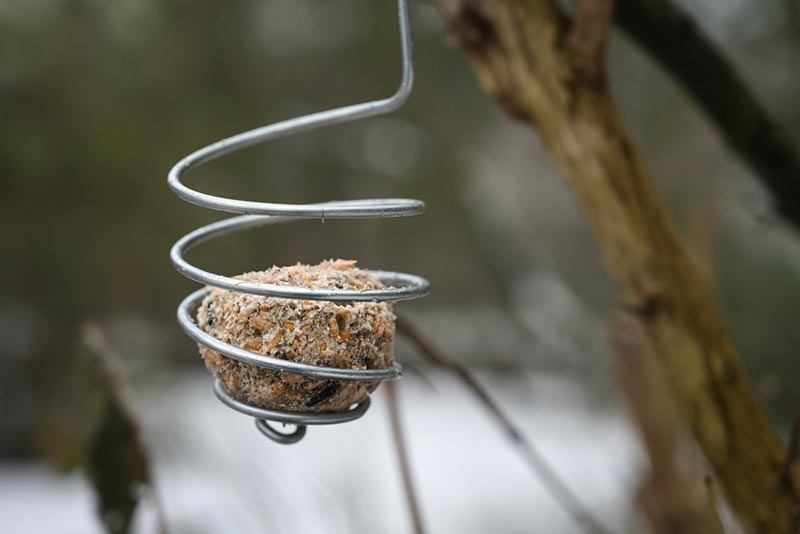
| Time of year | Winter |
| Cost | High |
When the weather cools down, wrens shift their diet from hard-to-come-by bugs to something more accessible. If you have a feeder, try putting out suet — there’s a good chance that you’ll attract a few wrens.
Just keep in mind that when the weather warms, the wrens will stop visiting. They’re back on the hunt for insects, and suet just won’t do the trick anymore.
5. Peanuts

| Time of year | Winter |
| Cost | Low |
While suet is highly effective at attracting wrens during the winter months, it’s expensive. Another option that you have for your feeders is peanuts.
Peanuts are cheap, but they also attract other, larger birds that might be around. It’s also not a wren’s favorite choice, and if they can find a suet feeder, they’re more likely to stay near there.
6. Sunflower Seeds
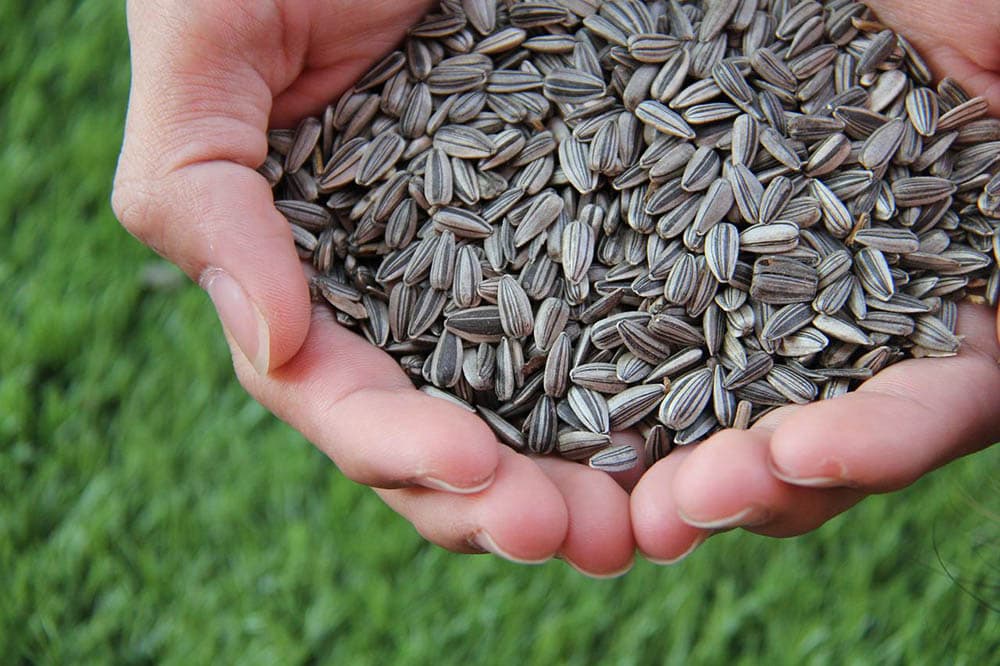
| Time of year | Winter |
| Cost | Low |
You can put sunflower seeds in the feeder to try to attract wrens. These are smaller than peanuts, which reduces the chances of attracting larger birds that might keep the wrens away.
However, just like peanuts, sunflower seeds aren’t a wren’s favorite. They’re more cost-effective than suet but won’t give you the same level of results.

How to Attract Wrens to Your Yard
Now that you know more about what wrens like to eat, it’s time to figure out what you can do to bring a few to your yard. Here are four different things that you can try to increase your chances of attracting a wren or two.
1. Plant Flowering Bushes
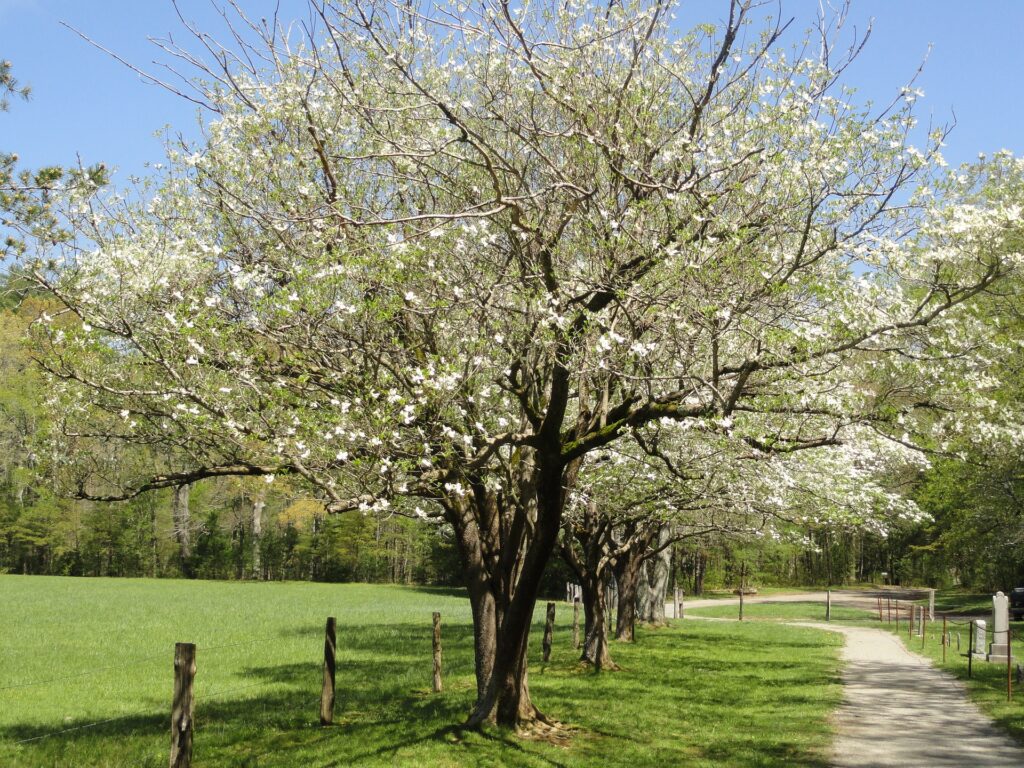
| Cost | High |
| Effectiveness | High |
Wrens love to eat insects and bugs during the summer months, so one of the best things that you can do to get wrens into your yard is to plant flowering bushes that bugs love.
It’s all about making the area a bug haven. If the bugs come, the wrens will too!
2. Put Up a Wren Nest
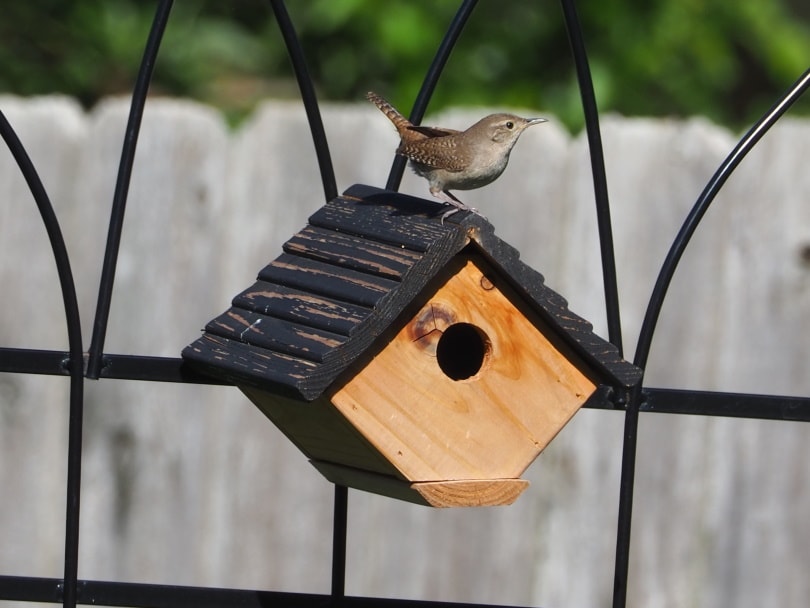
| Cost | Low |
| Effectiveness | High |
Wrens need a place to sleep and lay their eggs, and the closer they can be to their food source, the better. If you have an excellent yard for wrens, try putting up a few wren nests to increase the chance of getting more.
Put the nests up high and keep the bugs coming. Just remember that other birds might take over a wren nest. It’s all about who finds it first and makes it their home.
3. Put Out a Bird Bath

| Cost | Low |
| Effectiveness | High |
Every bird needs water, and once you have their home and food taken care of, it’s the final touch to make your yard the perfect wren abode. Remember that bird baths will attract all types of birds, though.
But even if wrens can only visit it occasionally, having a bird bath is better than not having it!
4. Put Out a Feeder
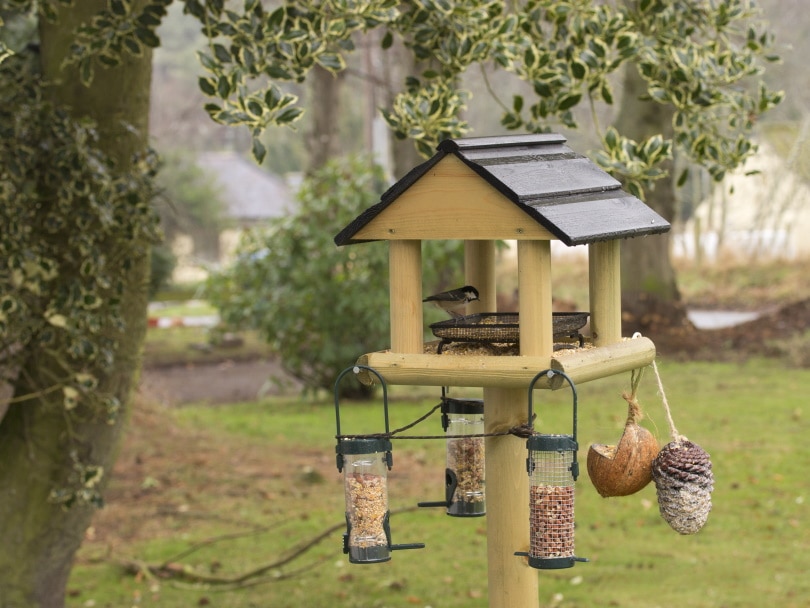
| Cost | High |
| Effectiveness | High |
You’re likely not going to attract a wren to your feeder that often throughout the summer, but if you don’t mind having winter wrens visiting, a feeder is a great choice.
Just ensure that you put their favorite winter foods in the feeder. For the best results, go with suet, but if you’re looking to save money, wrens will eat peanuts and sunflower seeds too.

Final Thoughts
Wrens are great little birds to have around, and now that you know more about what they like to eat and how to get them to your yard, you have to decide if you want to put in the work of attracting them.
If you’re lucky enough to have a few come visit from time to time, you’ll likely think that it was all worth the extra effort.
Featured Image Credit: Gentry George USFWS, Pixnio
About the Author Robert Sparks
Robert’s obsession with all things optical started early in life, when his optician father would bring home prototypes for Robert to play with. Nowadays, Robert is dedicated to helping others find the right optics for their needs. His hobbies include astronomy, astrophysics, and model building. Originally from Newark, NJ, he resides in Santa Fe, New Mexico, where the nighttime skies are filled with glittering stars.
Related Articles:
How to Collimate Binoculars: 9 Expert Tips
How to Clean a Refractor Telescope: Step-by-Step Guide
How to Clean a Telescope Eyepiece: Step-by-Step Guide
What Is the Best Binocular Magnification for Hunting? Optical Features Explained
How to Clean a Rifle Scope: 8 Expert Tips
Can You Use Binoculars to Look At Stars? How to Choose the Right Pair
How to Choose Binoculars for Bird Watching: 10 Expert Tips
10 Types of Hummingbirds in Arkansas (With Pictures)
